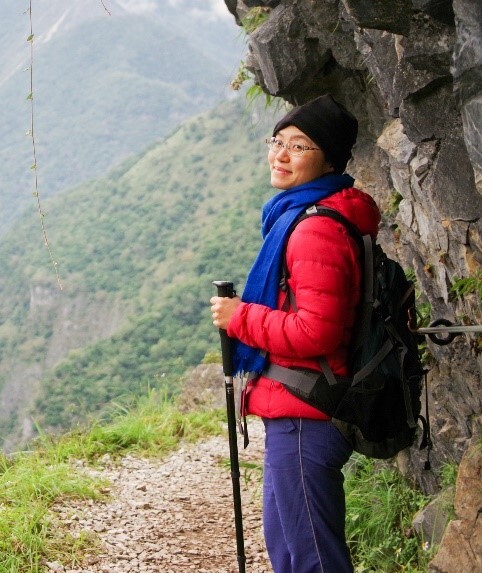Education | Experience | Expertise | Research Interests | Facility | Past Projects | Ongoing Projects | Other Articles
|
|
Yu-Shih Lin, Associate Professor
Office: MA2048 Telephone: +886 7 5252000 #5157, 5492 E-mail: yushih@mail.nsysu.edu.tw www: (not available)
|
|
List of publication: |
> Research Gate (download here) |
|
List of projects: |
> NSTC webpage (only in Chinese) |
|
ORCID: |
0000-0001-6498-0341 |
|
2009 |
Ph.D., Dept. of Geosciences, University of Bremen, Germany |
|
2006 |
M.Sc., Dept. of Geosciences, National Taiwan University |
|
2003 |
B.Sc., Dept. of Geography, National Taiwan University |
|
2020/2 - |
Associate professor, Department of Oceanography, National Sun Yat-sen University, Taiwan |
|
2012/12 - 2020/1 |
Assistant professor, Department of Oceanography, National Sun Yat-sen University, Taiwan |
|
2009/12 - 2012/11 |
Postdoctoral fellow, MARUM, Germany |
- Isotope geochemistry
- Organic geochemistry
- Carbon cycle of shallow and deep hydrothermal systems
- Carbon cycle of marine sediment
- Isotope ratio mass spectrometer (Delta V Plus, Thermo Fisher Scientific) equipped with a dual inlet and coupled to an elemental analyzer (Flash 2000) and a gas chromatograph (Trace GC Ultra)
- Dissolved carbon analyzer (Shimadzu TOC-L)
- Alpha counter (920E, EtherNIM)
- Vacuum line for dissolved inorganic carbon and dissolved organic carbon
(Last update: February 1, 2023)
Shallow-water hydrothermal systems of the Kueishantao
From 2015 to 2020, my research has been focusing on the carbon cycles of a shallow-water hydrothermal field off the NE coast of Taiwan (Kueishantao Islet). The research team clarified the hydrodynamics involved in the vertical and lateral plumes using numeral modeling (Lin et al., 2019, Mar. Chem.) and flow field measurements (Lin et al., 2020, Mar. Geol.), discussed the impact of vent CO2 on carbonate chemistry of surrounding waters (Lin et al., 2019, Mar. Chem.), and determined the primary production using stable carbon isotopes (Lin et al., 2021, Geobiology). Our recent (Wang et al., 2022, G-cubed) publication further clarifies whether and how aged CO2 propagates into dissolved inorganic carbon and particulate organic carbon of the hydrothermal plume. Our work provides a dynamic view on how the carbon cycling and processing are affected by the motion of water in a rapidly flushed vent field.
The 2019 cruise (OR2-2369 by RV Ocean Research II) to the Kueishantao hydrothermal field (video courtesy of Huai Su)
(Last update: February 1, 2023)
My ongoing research topics include two directions: carbon cycle in the CO2-rich hydrothermal system of the Southern Okinawa Trough (SOT), and sedimentary carbon cycle in different types of source-to-sink systems around Taiwan.
CO2-rich hydrothermal systems of the SOT
Since 2017, I joined the team organized by the Central Geological Survey of Taiwan and participated in multiple cruises to the SOT, which is known for its active hydrothermalism in a sedimented basin. A domestic ROV was involved in the survey and sampling campaigns between 2019 and 2021. An exceptional collection of samples including vent CO2-spiked deep seawater, CO2-impregnated sediment, and unusual minerals were retrieved during the project. A preliminary study summarizing the geochemistry of sediment less affected by hydrothermalism has been published (Lin et al., 2019, TAO). Sponsored by MOST (now NSTC) during 2020-2021, I continued to work on these samples with the following key topics: 1) What are the sources and flux of DIC in the deep basin of the SOT (manuscript under review)? 2) How does liquid CO2 affect the organic geochemistry of the sediment? 3) What does the unusual mineral tell us about the interplay between sedimentary events and hydrothermal activity?
ROV Triton XLX assisted sampling in the hydrothermal field “Mienhua Volcano” of the SOT during the cruise LGD 2104 by RV Legend (video courtesy of the Central Geological Survey)
Remineralization and organic matter composition of shelf sediments
Since 2016, I joined the FATES team led by Prof. James T. Liu (NSYSU). Systematic sampling of shelf sediments started in 2018, when I initiated a program (in collaboration with Associate Professor Chih-Lin Wei of NTU) comparing sedimentary oxygen consumption-which is closely related to organic carbon remineralization-of the shelves of the northern South China Sea. We attributed the distinct oxygen consumption rates of the Pearl River Shelf (craton/old orogen-large river-passive margin) and Gaoping River Shelf (new orogen-small river-active margin) sediments to the varying organic matter composition, which is in turn governed by the river mouth configurations and shelf topography (manuscript in preparation). In 2022, we expanded our sediment collection to the northwestern Taiwan Strait (new orogen-small river-passive margin), which provides a different tectonic setting for us to examine the relationship between oxygen consumption and organic matter composition.
Video clips showing the work at the Taiwan Strait (Kuan-Yin Depression to Chang-Yun Rise) during the cruise NOR3-0104 on RV New Ocean Researcher 3 (Jun 2022) (video courtesy of Yu-Shih Lin)
- Lin, Y. S. (2023) Four seasons in northern Germany. Invited article for the European Union Centre, Office of the International Affairs, NSYSU (only in Chinese). Link
- Lin, Y. S. (2020) The fantastic milky sea of the Kueishantao is in fact more like “yogurt (acidic and bacteria-rich)”. Invited article for the Oceanographic Society of the Republic of China (only in Chinese). Link

